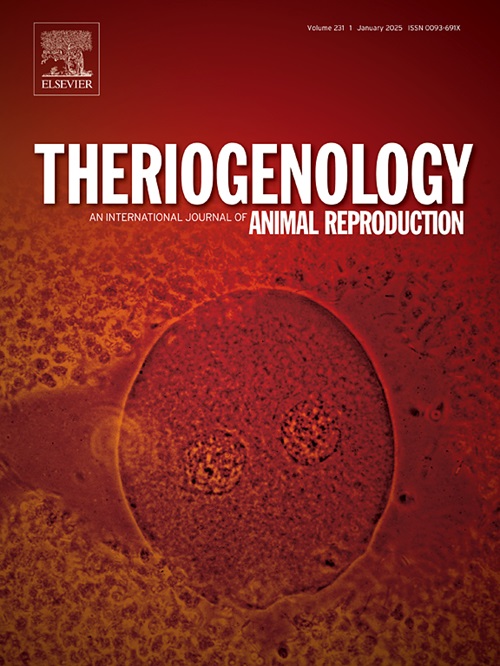培养基组成的改变和抗氧化支持对体外培养的牛囊胚内细胞质量和滋养外胚层数量的影响
IF 2.4
2区 农林科学
Q3 REPRODUCTIVE BIOLOGY
引用次数: 0
摘要
过去几十年来完成的大多数体外牛胚胎生产工作依赖于使用基于羊输卵管液化学成分(SOFBE1)开发的培养基配方。这项工作探讨了该培养基(modSOFBE1)的组成变化和五种抗氧化分子(5AO)的包含如何影响体外牛胚胎发育。研究使用了从屠宰场衍生的卵巢中收集的卵母细胞复合物,这些卵巢经过体外成熟和受精,然后将假定的受精卵放入各种培养基配方中。培养基类型和添加5AO对受精卵的卵裂率和卵裂胚形成囊胚的比例没有影响。在modSOFBE1+5AO中培养的囊胚中,滋养外胚层(TE)细胞数量增加,内细胞团(ICM)数量增加。培养基类型和添加5AO对囊胚性别比无影响。这项工作提供了证据,证明基础SOFBE1配方的改进和多种抗氧化剂的添加可能不会提高囊胚的整体发育速度,但它们可能是促进囊胚TE和ICM细胞数量的有效手段。这些对囊胚细胞组成的修饰和其他移植后发育的后续活动尚未描述,可能为我们提供了提高体外培养牛胚胎移植后妊娠成功率的新机会。本文章由计算机程序翻译,如有差异,请以英文原文为准。
Modifications in media composition and antioxidant support influences in vitro produced bovine blastocyst inner cell mass and trophectoderm numbers
Most of the in vitro bovine embryo production work completed over the past several decades has relied on using a medium formulation developed based on the chemical composition of sheep oviduct fluid (SOFBE1). This work explored how changes in the composition of this medium (modSOFBE1) and the inclusion of five antioxidant molecules (5AO) affect in vitro bovine embryo development. Studies used cumulus oocyte complexes collected from abattoir-derived ovaries that underwent in vitro maturation and fertilization, then presumptive zygotes were placed into the various media formulations. No medium type or 5AO supplementation effects were observed on the percentage of zygotes that cleaved or the percentage of cleaved embryos that formed blastocysts. Trophectoderm (TE) cell numbers were increased in blastocysts cultured in modSOFBE1, and inner cell mass (ICM) numbers were increased in blastocyst developed in modSOFBE1+5AO. Sex ratio of blastocysts was not influenced by medium type and 5AO supplementation. This work provides evidence that improvements in the base SOFBE1 formulation and the addition of multiple antioxidants may not improve overall blastocyst development rates, but they may be a useful means for promoting TE and ICM cell numbers in blastocysts. These modifications to the cellular composition of blastocysts and other subsequent activities on post-transfer development that have yet to be described may offer us with new opportunities to improve post-transfer pregnancy success of in vitro produced bovine embryos.
求助全文
通过发布文献求助,成功后即可免费获取论文全文。
去求助
来源期刊

Theriogenology
农林科学-生殖生物学
CiteScore
5.50
自引率
14.30%
发文量
387
审稿时长
72 days
期刊介绍:
Theriogenology provides an international forum for researchers, clinicians, and industry professionals in animal reproductive biology. This acclaimed journal publishes articles on a wide range of topics in reproductive and developmental biology, of domestic mammal, avian, and aquatic species as well as wild species which are the object of veterinary care in research or conservation programs.
 求助内容:
求助内容: 应助结果提醒方式:
应助结果提醒方式:


